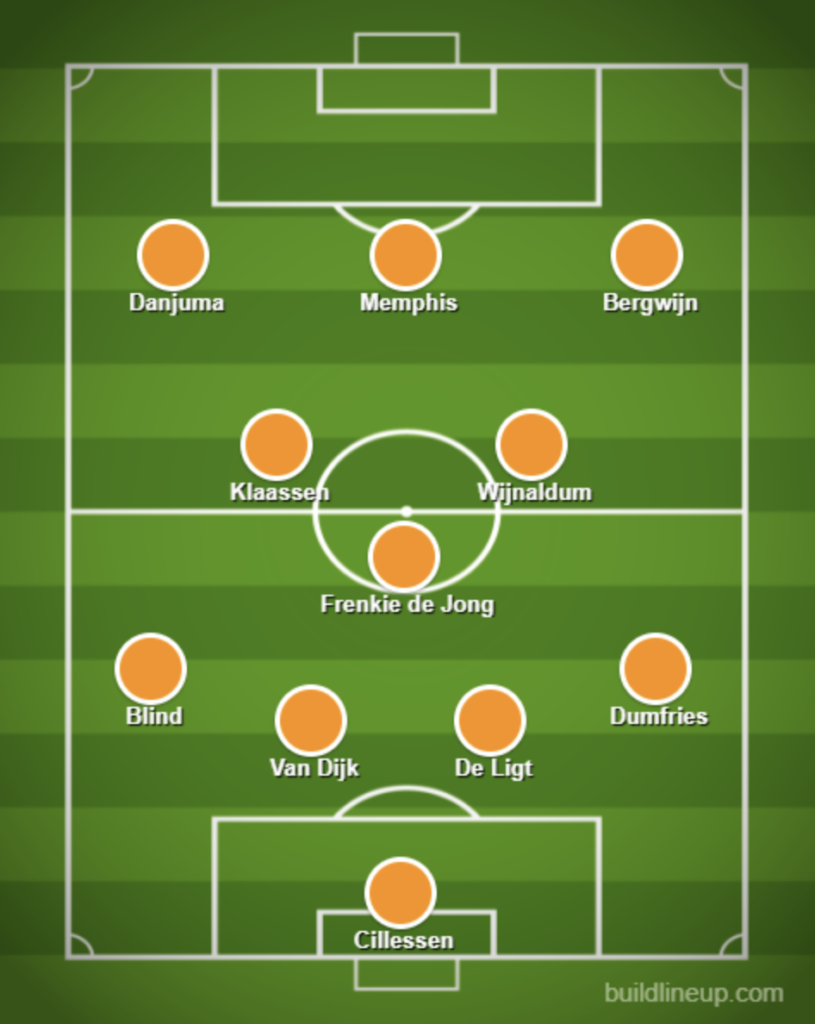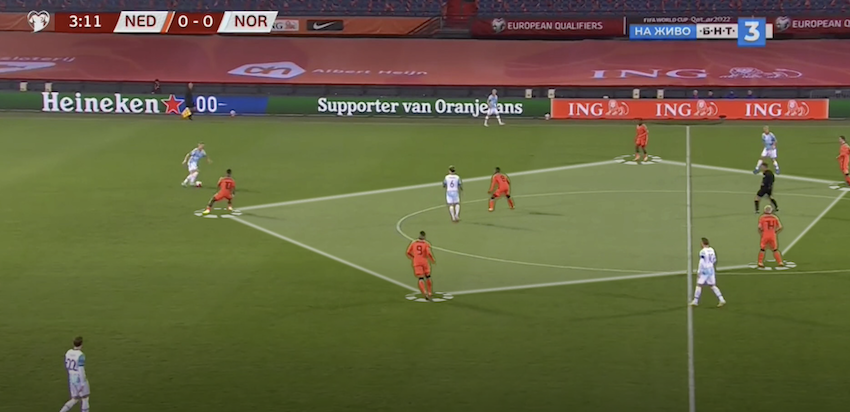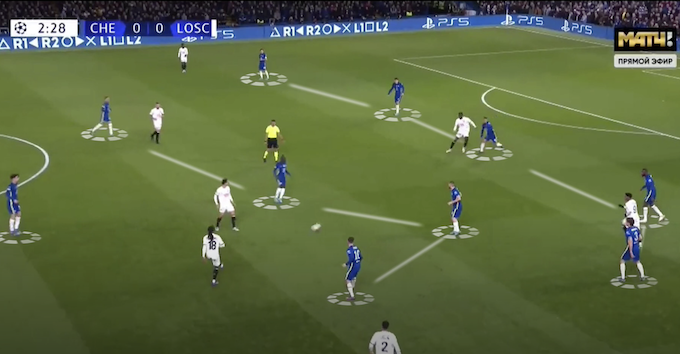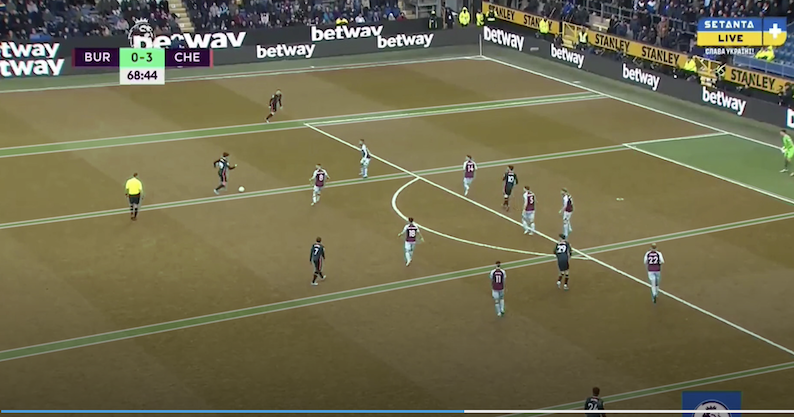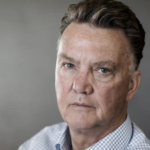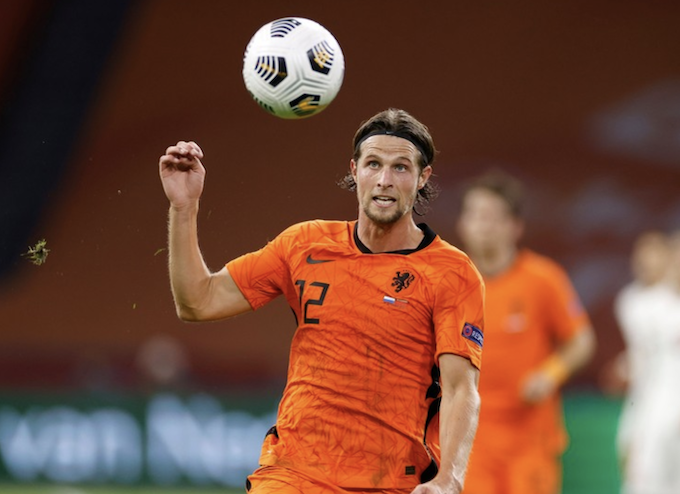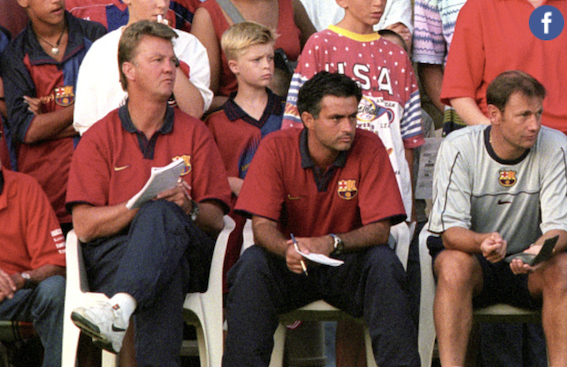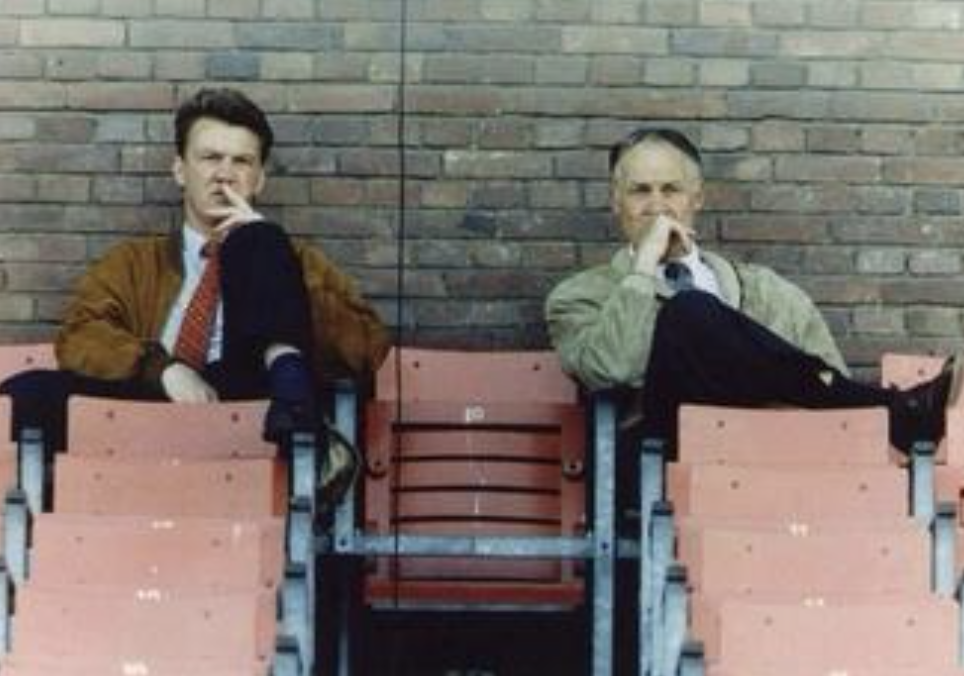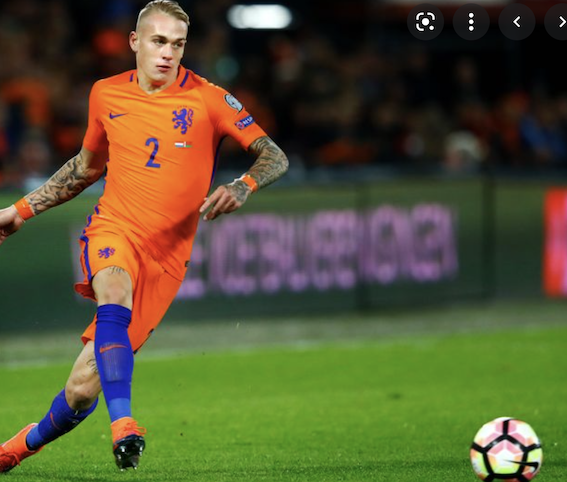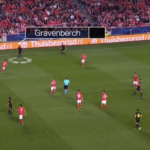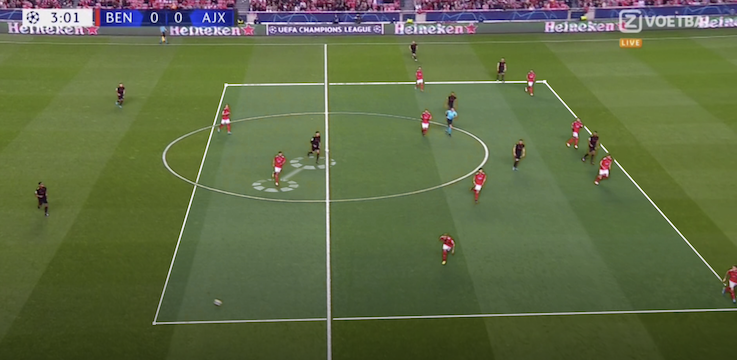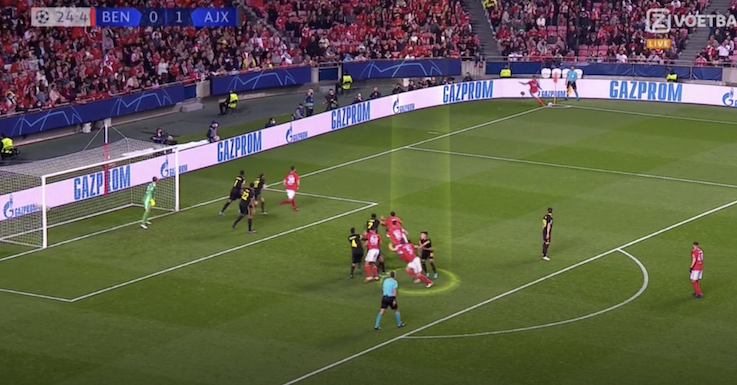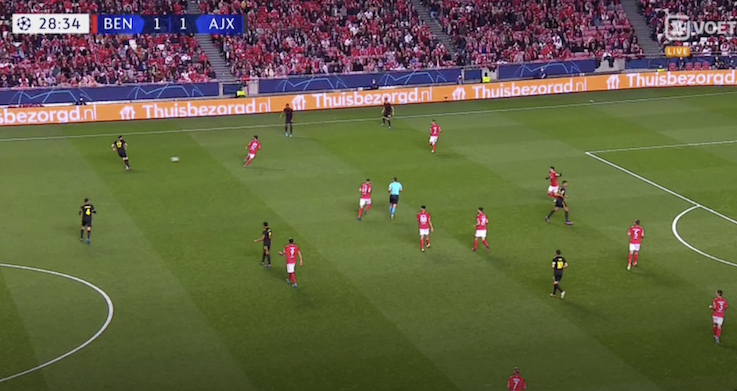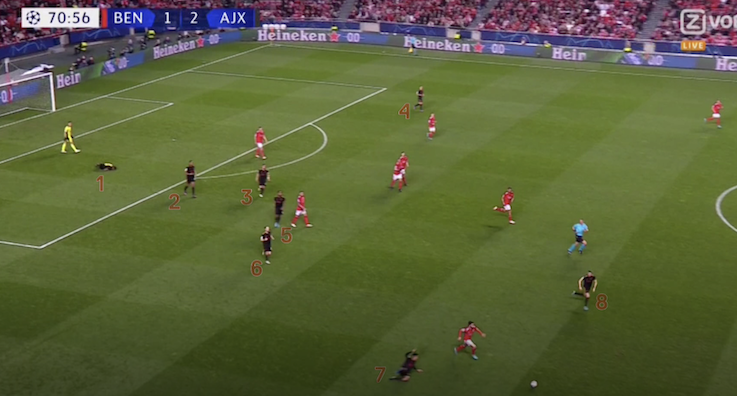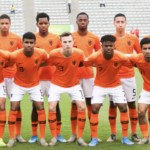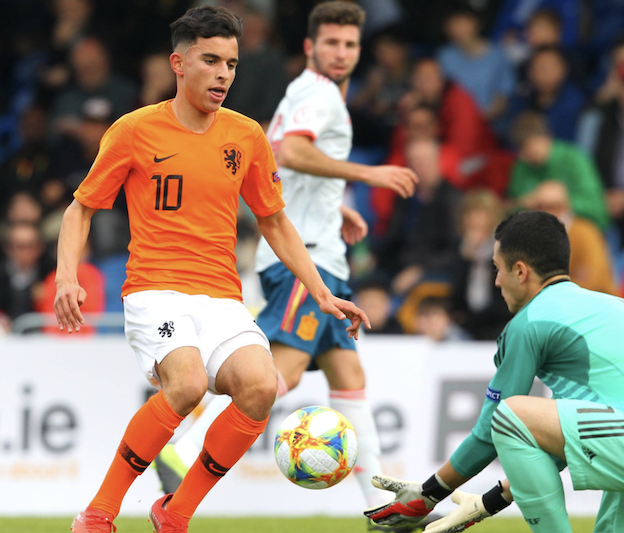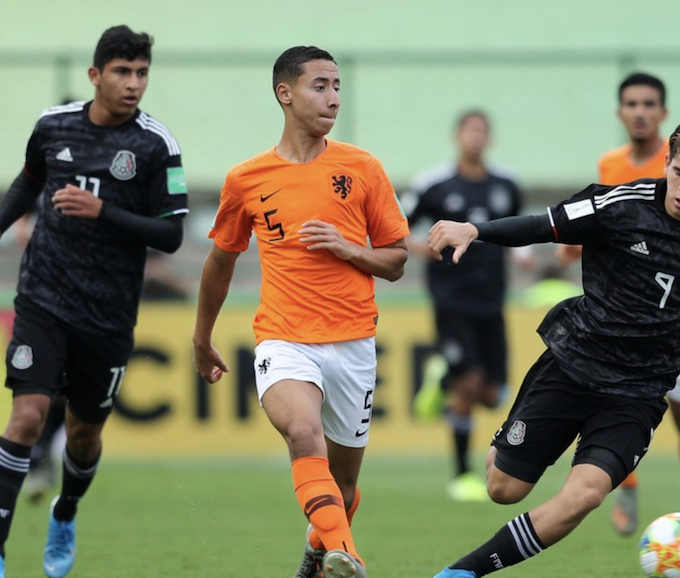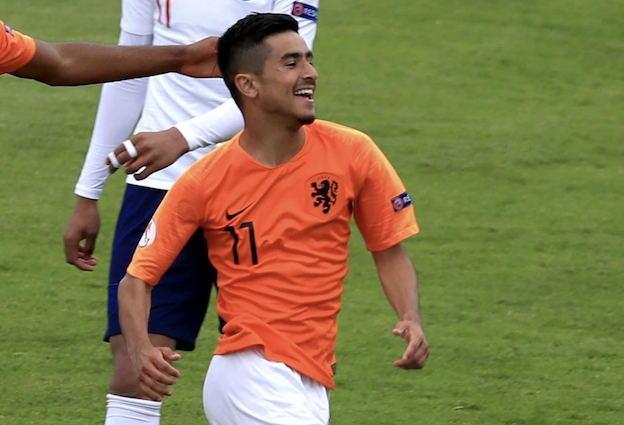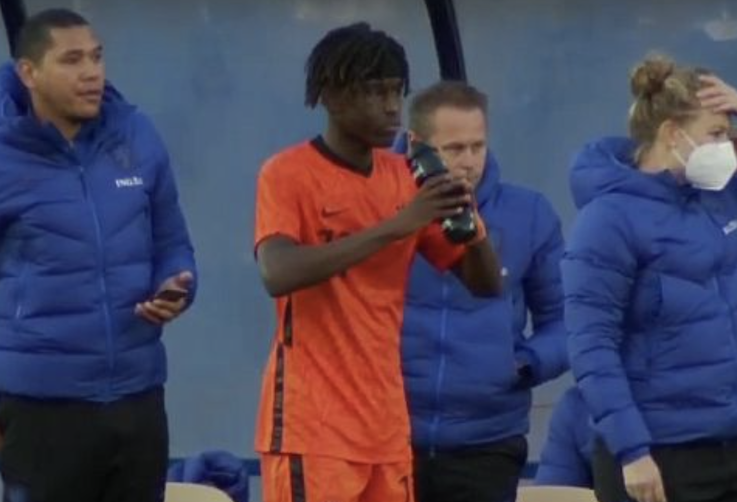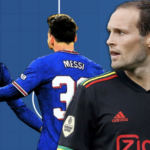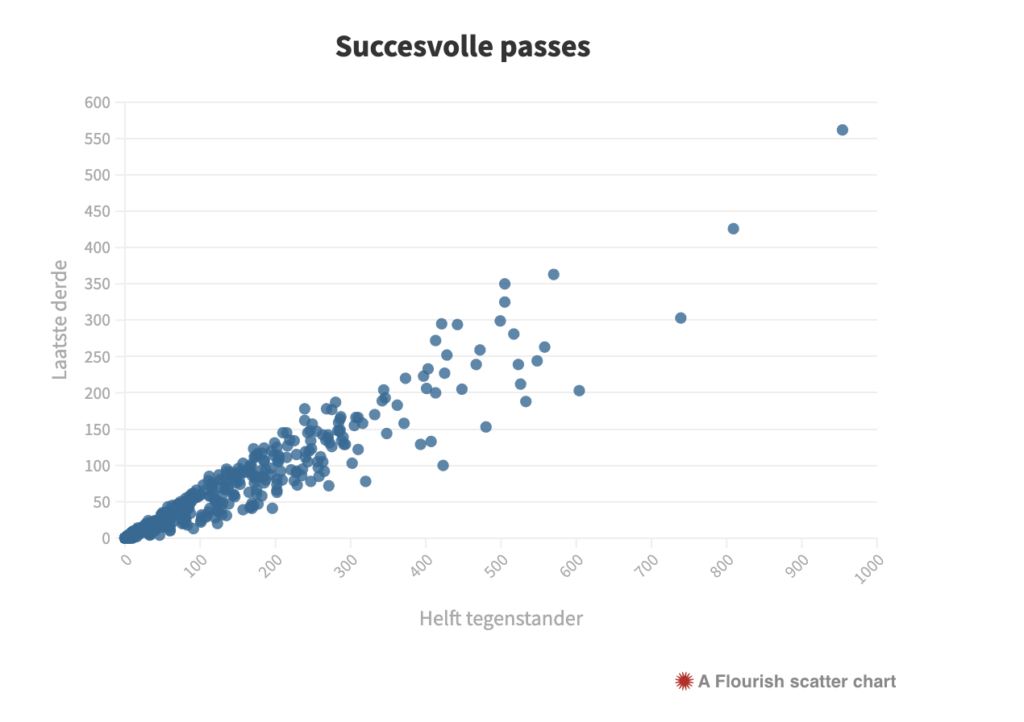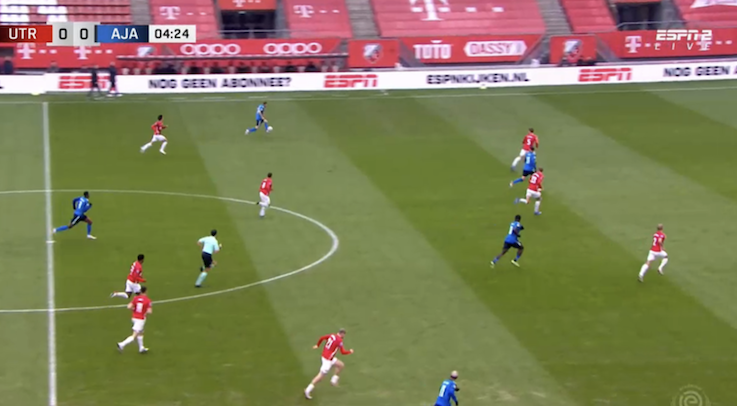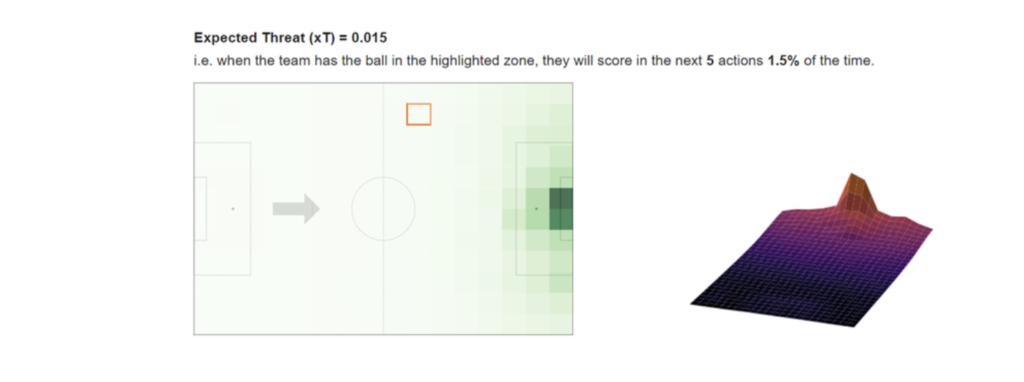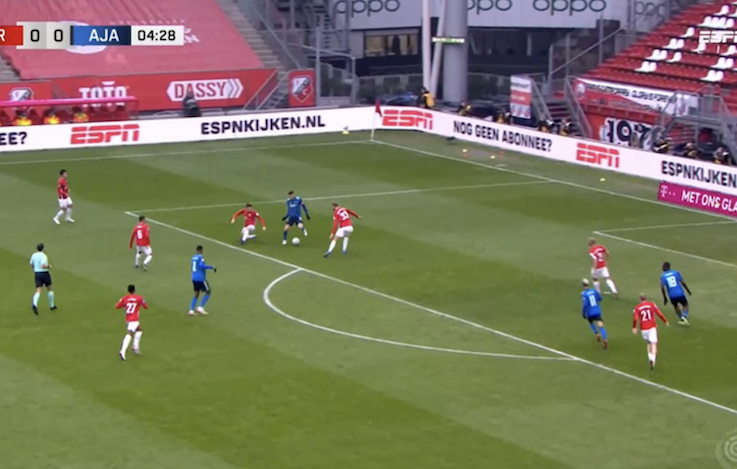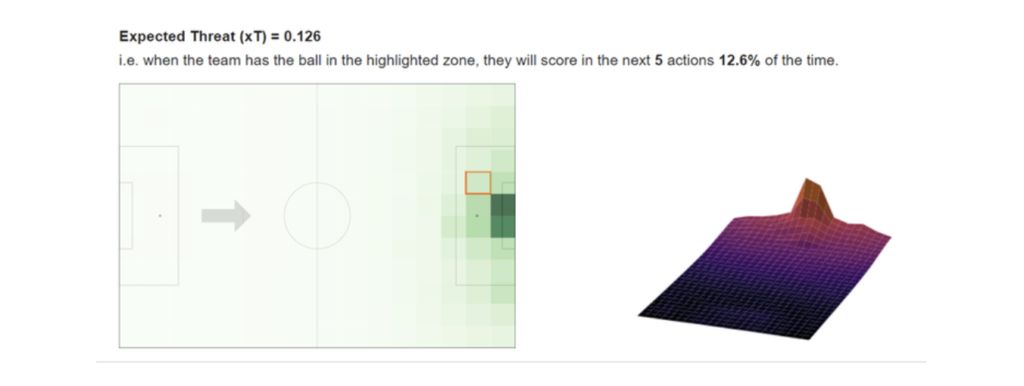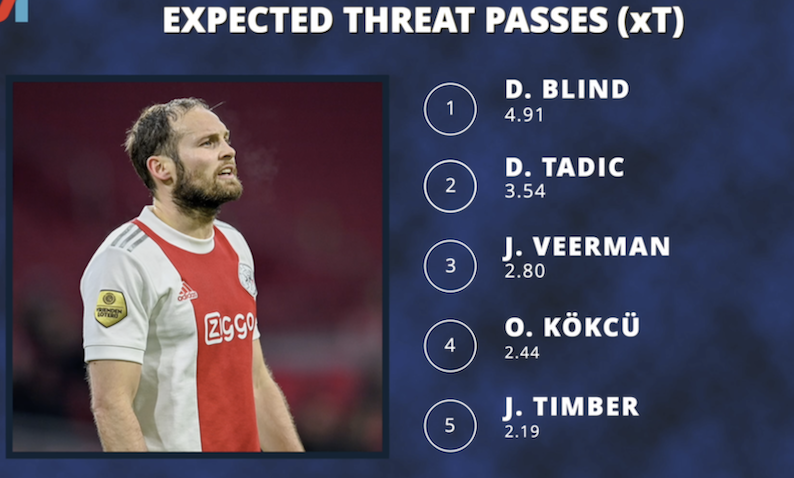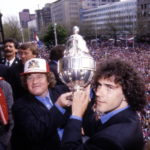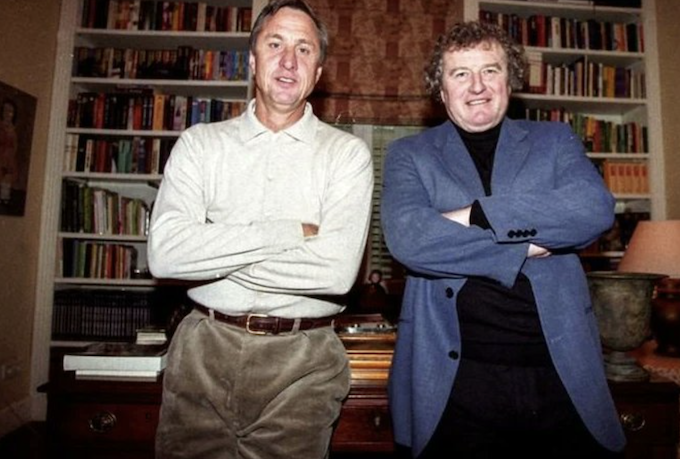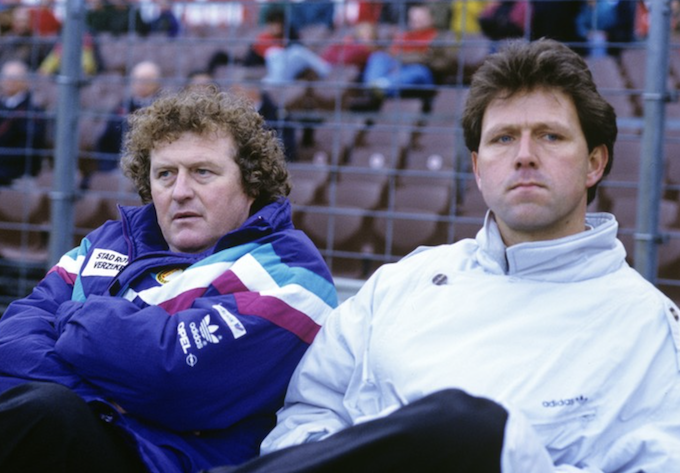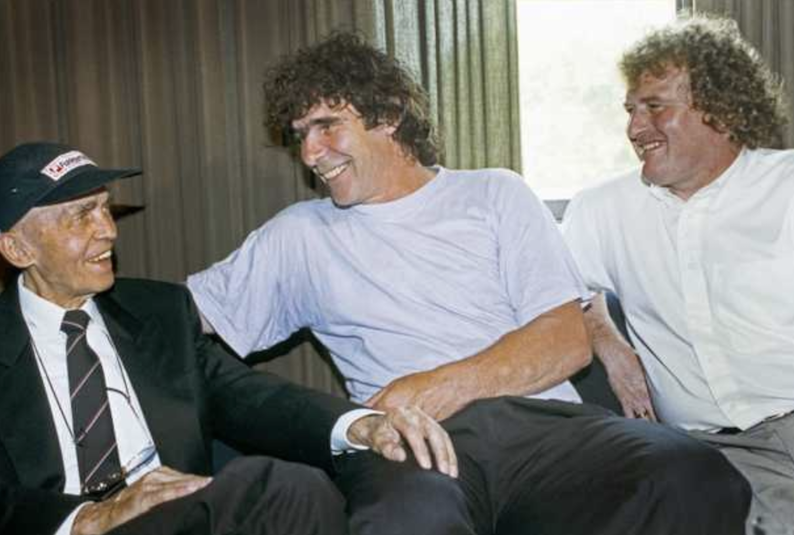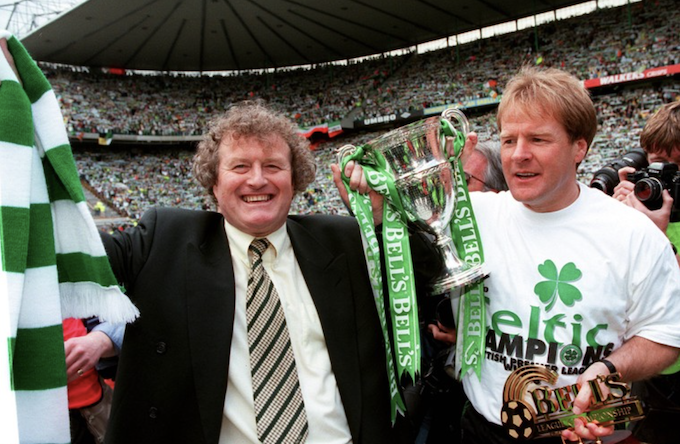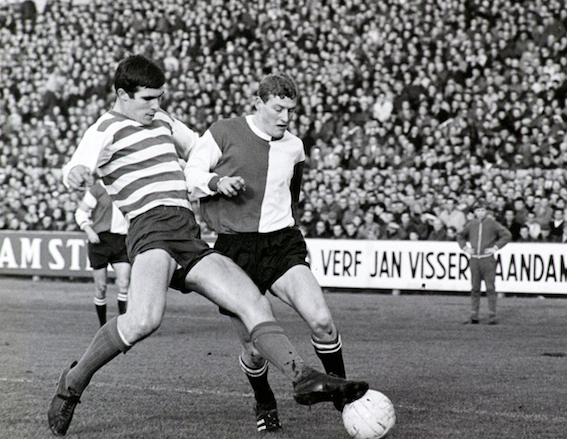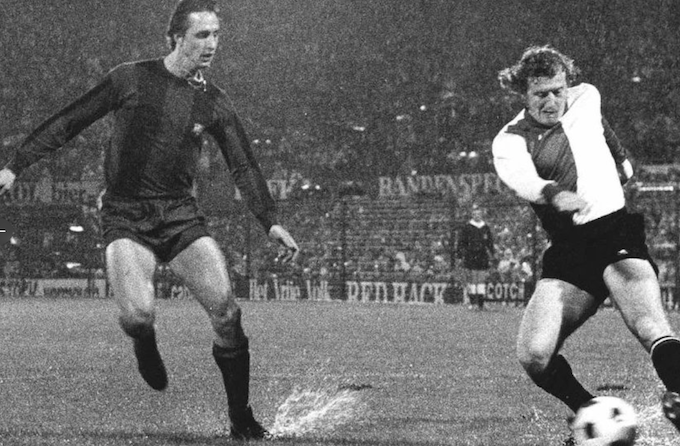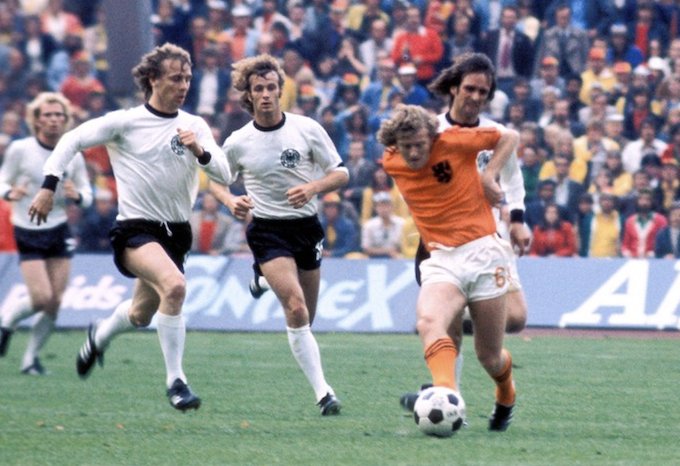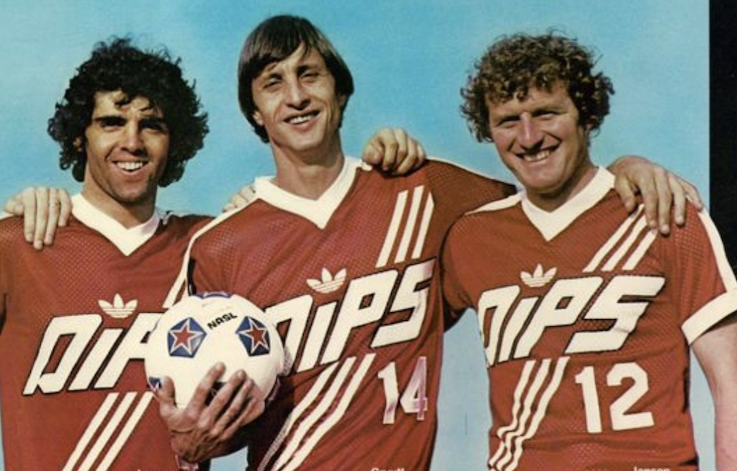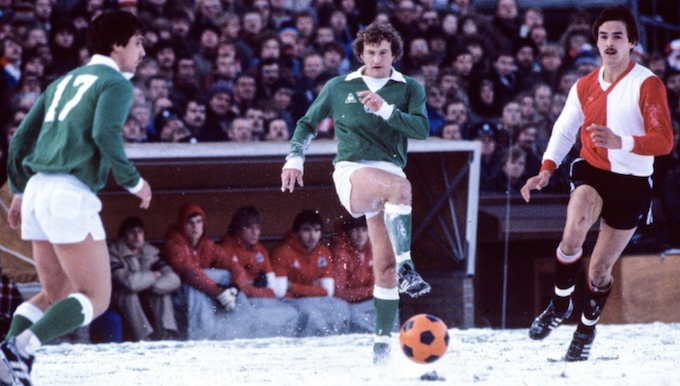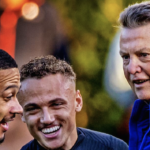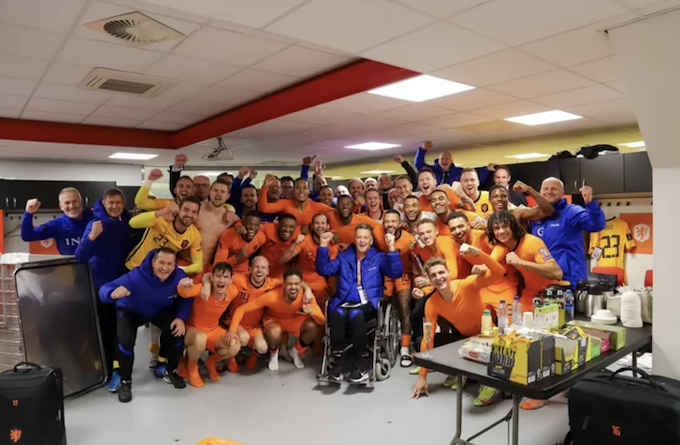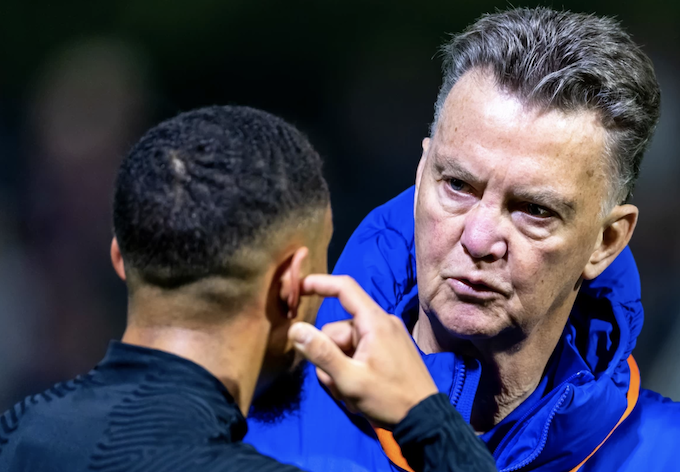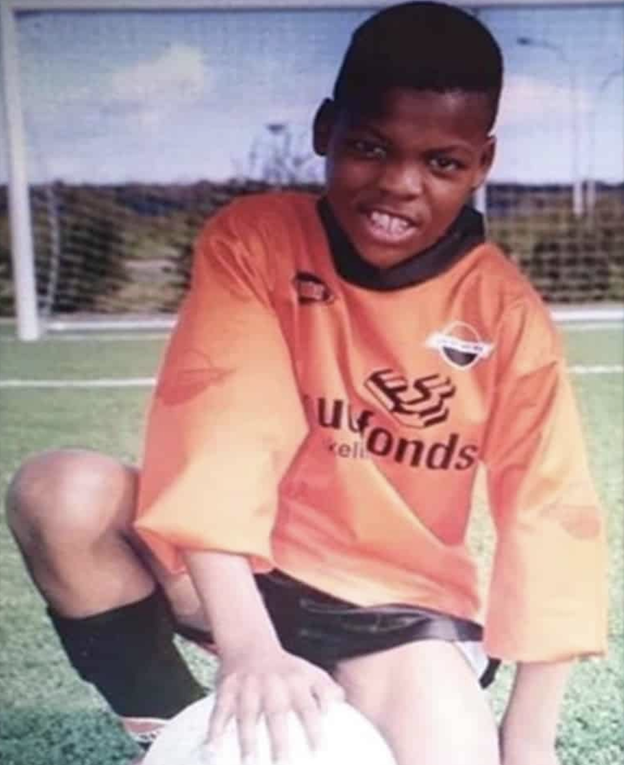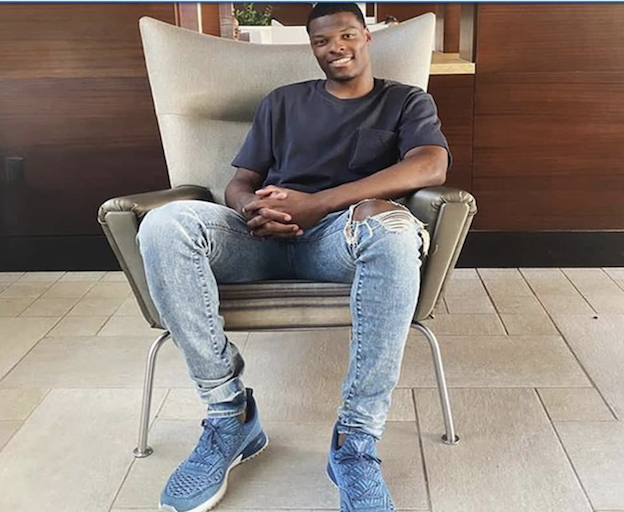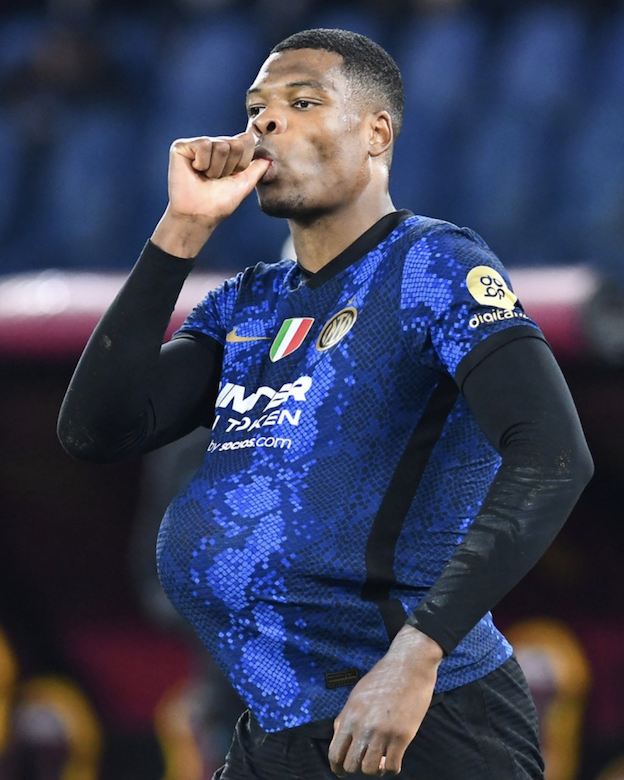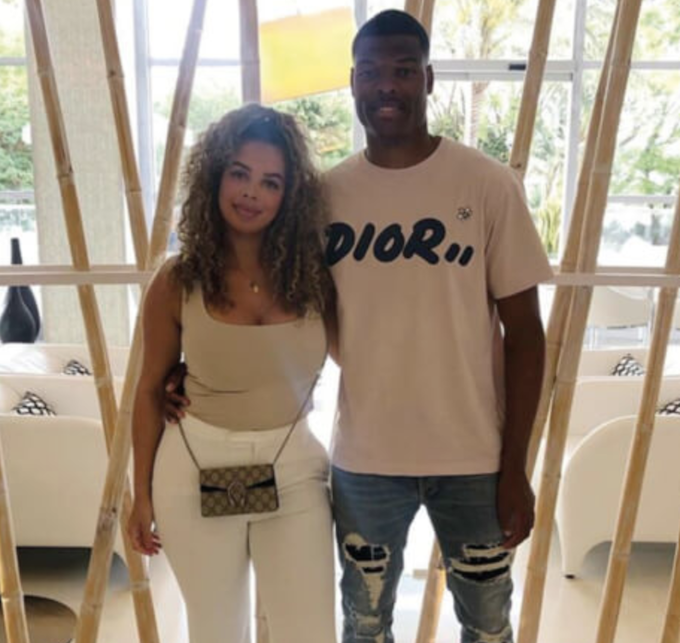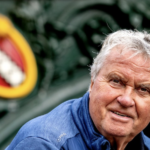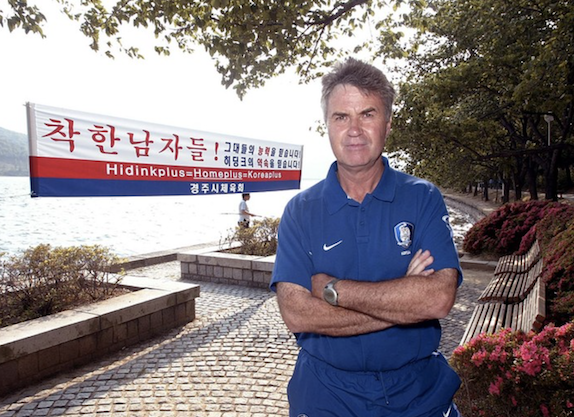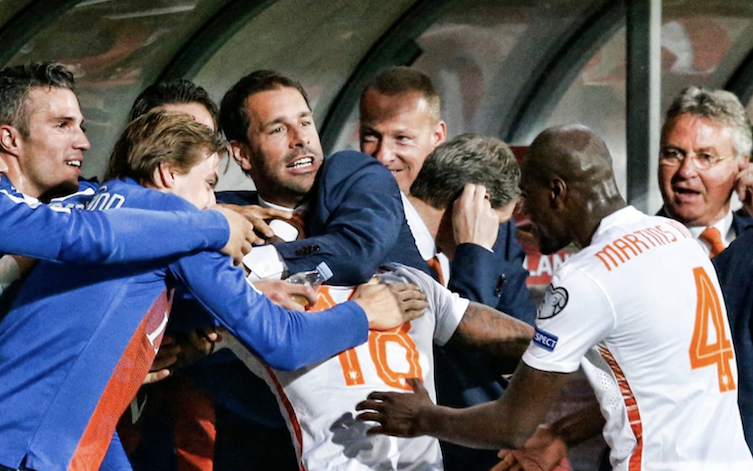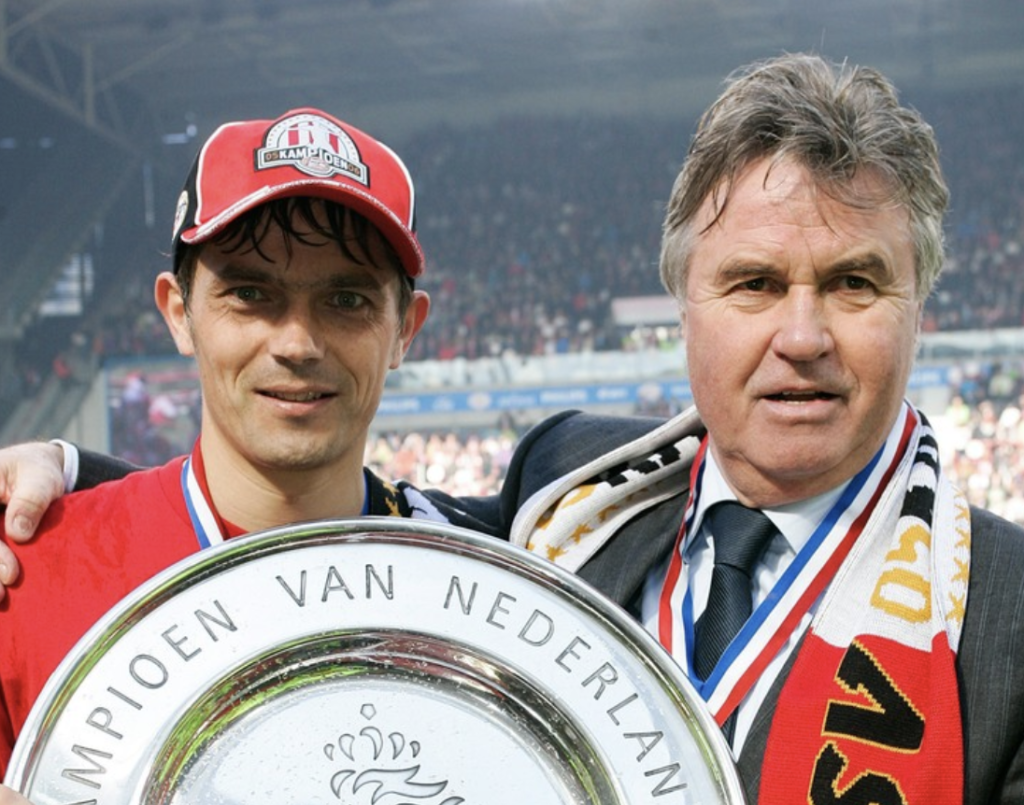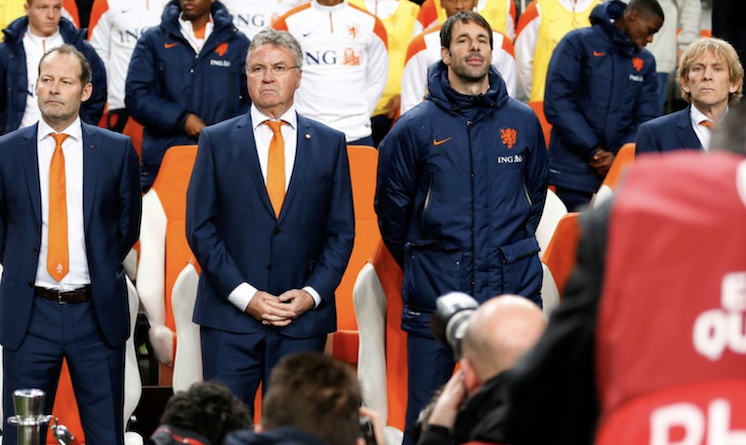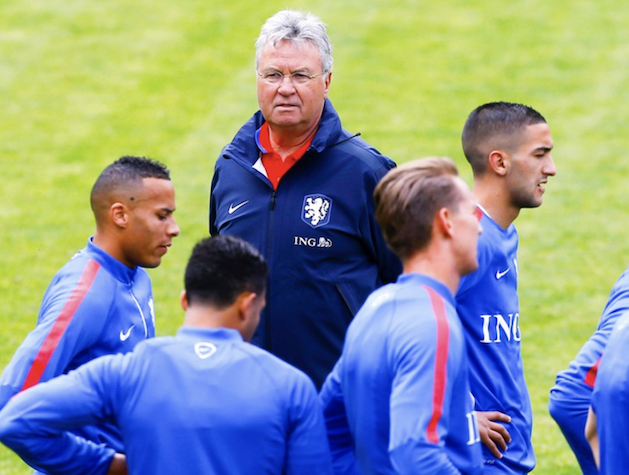In the seven international games under Van Gaal since his return, the former school teacher played the usual 4-3-3 with one holding mid and two attacking midfielders. This, because the players asked him to play this way. The coach realised he wasn’t going to drill a new system in, in the limited time available. Now, the coach claims to have the time and he announced to go into an intense week, in which he would practice the 5 at the back concept. A practice week disturbed by a positive Covid test by the coach himself.
Three experts on the system change.
Pierre van Hooijdonk ( formally of NAC, Celtic, Nottingham Forest, Vitesse, Feyenoord and Fener. Played 46 international games for Oranje): “We don’t need to stick to that so-called Dutch School. It’s naive to think the 4-3-3 is the only way to win. We won the 1988 Euros with a 4-4-2 system. I think 5-3-2 is a very good system too, and we might have the players for that. We don’t have top wingers anymore, but we do have good wingbacks, good central defenders. And 3-4-3 is also an option, with three forwards.”
Ronald de Boer *(formally of Ajax, Barca and Rangers, played 67 international games for Oranje): “I think we should stop thinking we need to dominate matches. You do need your identity and a system you can fall back on, but coaches like Pep Guardiola also adapt their system to what the opponent can do. Man City at times plays with 3 at the back or an extra midfielder. With Oranje, there is less time to work on a system. so it’s useful to zoom in on where the weakness of the opponent is. Is this with two strikers and wingbacks, sure, do that. Why not? I always look at “how can I win this match?”. The way Benfica beat Ajax, that is something we should learn from!”
Hans Kraay JR (ex defender of De Graafschap, Den Bosch, Telstar, Brighton and Hove Albion): “If playing 4-3-3 works for the team, why change? I do get that we have great central defenders and no real right winger but I would simply play 4-3-3. Keep it simple.”
This is the way Oranje beat Norway in the key match securing the World Cup ticket. Bijlow, De Vrij and Berghuis weren’t available, so Van Gaal played with Cillesen, De Ligt and Bergwijn.
At the last presser, Van Gaal started to talk about the reversed triangle. He talks about the forward line of the 3-5-2 which he used in Brazil 2014. In the image below we can see how that worked in the match versus Spain. Of that squad, only Daley Blind, Stefan de Vrij, Jasper Cillesen, Clasie, Wijnaldum and Depay are still squad members.
We had two oldies up front, Van Persie and Robben and oldie Sneijder right behind them for his passing. Van Persie was the shrewd distractor for Robben’s runs. Blind and Janmaat were the wingers.
Another option is the square, which Chelsea uses. Van Gaal is clearly a Tuchel fan and mentioned them a number of times in his press conference as an example. Below is the line up Tuchel used in the CL finals versus Man City. In Oranje, Memphis could be the striker, with Wijnaldum and Danjuma or Lang or Berghuis or Gakpo behind him. Malacia on the left, Dumfries on the right and Frenkie and Koopmeiners in the engine room, for instance.
As we have seen at Atalanta and Barcelona, both Koopmeiners and Frenkie can also play in a more forward role.
Lets check the Tuchel way and how he inspires Van Gaal. Van Gaal: “I don’t want to play with 5 defenders at the back. Many teams play like this and you invite the attack of the opponent. The way I want to execute it is more like Chelsea does it. Pressure on the ball. Sometimes, provocative pressing.”
Van Gaal has three reasons to zoom in on the Chelsea way of playing.
1 Circle Pressing
Van Gaal uses the Norway match as example. “Against Norway, we decided to press around the mid circle which gave us space behind their back line to use our speed.”
This is what Van Gaal calls the provocative press. With total high press, the pressure starts at the edge of the box of the opponent. With circle pressing, you start the press around the mid circle. Hence the name.
With three central defenders it is easy to cover the central axis of the pitch. In a 4-3-3 you’d have six players in the axis ( two central defenders, three midfielders and a striker), whereas in a 3-4-3 it’s eight players ( three defenders, two controlling mids, two attacking mids and a striker).
Chelsea demonstrates how they use their systems in a flexible way. Around the mid circle, the team is organised from a 3-4-2-1 system (See above) but once they end up on their own half, they go 5-4-1. This system allows the defenders to press forward. Playing against Chelsea “between the lines” is hard, as there will always be a defender ready and able to pick you up.
Chelsea’s 5-4-1 on their own half….
2 Central Defenders.
Van Gaal thinks this system was made for the current Oranje squad. “I try to use players in their strength, not their weakness. With the qualities we have, it screams for a 5-3-2 variant. My players weren’t ready for it, but now they will be.” Van Gaal sees it well, with Van Dijk, De Vrij and De Ligt we have world class defenders. Nathan Ake is a valued defender at Man City, while Joel Veltman plays everything for Brighton. Sven Botman won the French title last season and Pascal Struijk is impressive at Leeds. In the Eredivisie, players like Timber, Schuurs, Blind, Teze and Geertruida are options. And even Koopmeiners and Frenkie de Jong can play at the back. The reason to go for 5-3-2 now is different than it was in 2014. Back then, Van Gaal did mention he used the system to have less defensive duties for this (older) forwards while shoring up the relatively inexperienced defence.
Now, it would be a system of luxury for us.
Keeping the width and the designated areas to be populated…
Van Gaal is not sure about the actual execution. “I think we will play with three defenders and four “flat” midfielders, which allows for the ideal press. Up top, we might play with one 10 and two strikers or one striker and two half 10s behind the striker. The coming games will demonstrate what works best.” Van Gaal wants six or seven “loyal” players, supporting the creative ones like Memphis and Gakpo.
Important to note: Van Gaal always wants a left footed central defender in the line up, so its seems he is not thinking about Van Dijk – De Vrij – De Ligt. In his view, Ake or Blind will be playing that left central position.
3. Wingers
Ever since his return to Oranje, Van Gaal laments the lack of real wingers. And he’s referring to the types of Van ‘t Schip, Overmars or Andy van der Meyde. Players who take on their man and go to the byline to cross a ball into the box.
Van Gaal hails this generation of players for their professionalism and focus but also sees he misses attacking power. In the five big competitions, it’s not easy to find Dutchies. Weghorst, Malen, Memphis and Danjuma are all starters or close to being starters and they all play central striker or in a two striker system. Bergwijn is benchwarming at Spurs, while right winger Berghuis plays on 10 for Ajax. Gakpo hammers on the door as a left winger and Noa Lang is also more comfortable on the wing, but they are all players with a tendency to come centrally. Which is exactly how Van Gaal wants it in his 3-4-3.
Tuchel plays according to the Dutch School at Chelsea, creating the free man in midfield. He uses his wingbacks as the only players on the wing, to keep the pitch wide and long. Chelsea has four midfielders close together on the pitch. Together with three defenders, they play with seven players close to each other, players who are all very good in confined spaces.
Pep Guardiola and his analysis: “Why does Chelsea play so good? They have three central defenders and two holding mids close to one another. Really close. And they keep the pitch wide with their wingbacks. And they have depth, with the speed of Werner or Lukaku in behind. You can’t keep the pitch small against Chelsea. They will push you both in width and in depth. And they have amazing players in the engine room. It’s so hard to play against them.”
Up top, Van Gaal keeps his options open but the 3 at the back and the 4 in midfield seem to be settled on.
Chelsea uses the reverse triangle against teams that want to build up from the back. Against teams like Liverpool, Brighton or Man City, they use this to put pressure on, as you can see below. The opponent uses two central defenders and a holding mid to find the way forward. By using this pressure system, the opponent is forced to open up and build up on the wings.
Chelsea can change system without a problem. From 3-4-3 to 3-5-2 or 4-3-3 and 4-4-2. Depending on how the opponent want to play. Tuchel has response for them all. It’s very likely that Van Gaal will copy this for Oranje.
These two friendlies, we will see the first glimpses of this system. I think we won’t bother with the results, so much, although I do think we’ll beat England and draw against Denmark. Will be good to see Eriksen play again ( if he does).
Expect a line up like this for Denmark. Flekken is a cert, I also believe Koopmeiners will play. Van Gaal is a fan of the Atalanta midfielder. Danjuma and Memphis up top.
NOTE: Jordan Teze, Cody Gakpo and Jurrien Timber will not play due to fitness issues.
If this line up works well versus Denmark, expect Flekken to keep his spot and expect Malacia and Klaassen to come in versus England. I also expect Malen to get playing time probably in place of Memphis, who just returned to fitness.



